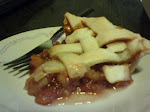
Praline has many different meanings. The first pralines were whole almonds caramelized in sugar. Originally spelled praslines, they were named after the French soldier and diplomat César, duc de Choiseul, comte du Plessis-Praslin, who lived in the town of Montargis from 1598 to 1675. According to the story, the duc’s cook, Clément Lassagne, invented pralines in 1636 by dropping almonds into a cauldron of boiling sugar. After retiring from the duc’s service, Lassagne founded the Maison de la Praline, a confectioner’s shop that still exists in the town of Montargis in the same location, operated by a family named Mazet. In the centuries since, the marketplace has taken the word praline and used it to describe multiple products. Whenever you see the word praline, nuts are involved; but the word often does not refer to the original caramelized almond.

~In Germany and Belgium, a praline is any filled chocolate, many of which are filled with ground nuts (praline paste).~In Louisiana and Texas, a praline is a flat, round, creamy candy patty dotted with crunchy pecans. Early Creoles began using local pecans as the nuts, instead of the almonds or hazelnuts used in the French confection. The product evolved into a candy made of brown sugar, butter and cream and cooked to a soft-ball stage like fudge, but filled with pecans and spooned onto wax paper to form patties. It is called a praline but has absolutely nothing in common with French—or any European—pralines, except for the use of sugar and nuts.~To add to the confusion, the French today also refer to pralines as dragées. Dragées are also sugar-coated almonds, but technically they are almonds encapsulated in a hard-shell coating.~So whichever "Praline" you prefer ... Enjoy! ~ Chef ~

 Praline has many different meanings. The first pralines were whole almonds caramelized in sugar. Originally spelled praslines, they were named after the French soldier and diplomat César, duc de Choiseul, comte du Plessis-Praslin, who lived in the town of Montargis from 1598 to 1675. According to the story, the duc’s cook, Clément Lassagne, invented pralines in 1636 by dropping almonds into a cauldron of boiling sugar. After retiring from the duc’s service, Lassagne founded the Maison de la Praline, a confectioner’s shop that still exists in the town of Montargis in the same location, operated by a family named Mazet. In the centuries since, the marketplace has taken the word praline and used it to describe multiple products. Whenever you see the word praline, nuts are involved; but the word often does not refer to the original caramelized almond.
Praline has many different meanings. The first pralines were whole almonds caramelized in sugar. Originally spelled praslines, they were named after the French soldier and diplomat César, duc de Choiseul, comte du Plessis-Praslin, who lived in the town of Montargis from 1598 to 1675. According to the story, the duc’s cook, Clément Lassagne, invented pralines in 1636 by dropping almonds into a cauldron of boiling sugar. After retiring from the duc’s service, Lassagne founded the Maison de la Praline, a confectioner’s shop that still exists in the town of Montargis in the same location, operated by a family named Mazet. In the centuries since, the marketplace has taken the word praline and used it to describe multiple products. Whenever you see the word praline, nuts are involved; but the word often does not refer to the original caramelized almond. ~In Germany and Belgium, a praline is any filled chocolate, many of which are filled with ground nuts (praline paste).~In Louisiana and Texas, a praline is a flat, round, creamy candy patty dotted with crunchy pecans. Early Creoles began using local pecans as the nuts, instead of the almonds or hazelnuts used in the French confection. The product evolved into a candy made of brown sugar, butter and cream and cooked to a soft-ball stage like fudge, but filled with pecans and spooned onto wax paper to form patties. It is called a praline but has absolutely nothing in common with French—or any European—pralines, except for the use of sugar and nuts.~To add to the confusion, the French today also refer to pralines as dragées. Dragées are also sugar-coated almonds, but technically they are almonds encapsulated in a hard-shell coating.~So whichever "Praline" you prefer ... Enjoy! ~ Chef ~
~In Germany and Belgium, a praline is any filled chocolate, many of which are filled with ground nuts (praline paste).~In Louisiana and Texas, a praline is a flat, round, creamy candy patty dotted with crunchy pecans. Early Creoles began using local pecans as the nuts, instead of the almonds or hazelnuts used in the French confection. The product evolved into a candy made of brown sugar, butter and cream and cooked to a soft-ball stage like fudge, but filled with pecans and spooned onto wax paper to form patties. It is called a praline but has absolutely nothing in common with French—or any European—pralines, except for the use of sugar and nuts.~To add to the confusion, the French today also refer to pralines as dragées. Dragées are also sugar-coated almonds, but technically they are almonds encapsulated in a hard-shell coating.~So whichever "Praline" you prefer ... Enjoy! ~ Chef ~










































